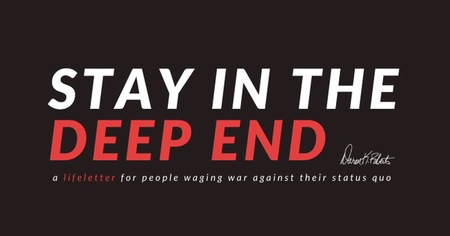The process presents numerous questions and obstacles to address, but also tremendous opportunities and benefits to be realized. Alignment is the future. Alignment must occur in school and community-based programs. Failure to embrace the initiative will marginalize our work and perpetuate a pervasive myth that afterschool is little more than babysitting.
Working together during the past decade, many school and afterschool leaders have developed numerous examples of high-quality, aligned, expanded learning opportunities in rural, suburban, and urban communities in all socio-economic settings. Powerful partnerships have developed and continue to evolve that support and strengthen schools and afterschool programs. Yet, despite the progress that has been made with the big picture conceptualization, successful implementation at the ground level is contingent upon the abilities of two key people – the school principal and the onsite afterschool program leader – who must be able to work together. And that work can potentially be in a state of flux because of changes in personnel. Where strong professional relationships have developed, schools and afterschool programs realize positive results. But when one or both leaders change jobs, the work of envisioning expanded learning opportunities in school and afterschool must begin anew.
To begin that process, or to improve existing collaborative practices with school leaders, the ten tips that follow are a starting point. Further information, specific advice, suggestions, recommendations, and evidence-based practices can also be gleaned from leaders in many learning communities throughout the nation.
Invest in the afterschool program leader.
The position of the onsite program director must be viewed as a leadership role rather than managerial. It should be a full-time job. This individual must possess requisite skills and competencies and advocate for the program within the learning community. He/she must be an afterschool activist and champion. Programs cannot produce expected results with a part-time program manager who lacks knowledge, competencies, and leadership experience interacting with school officials.
Develop a shared mission and vision.
An afterschool program mission statement should succinctly describe within a few simple words why the program exists. A vision statement is more detailed and explains short and long-term activities, goals, and desired results. Where programs are aligned with schools, the afterschool mission and vision statements read similarly with those of the school. Moreover, both the principal and the program leader share the same mission and vision and continuously speak the same language in order to help others buy-in and make the statements their own.
Develop interpersonal "clicking" skills.
There are psychological forces at play that can help afterschool professionals develop professional relationships that "click" with principals. Mastery of some simple cues can lead to immediate, deep, and meaningful connections with other people in and out of schools, too. An awareness of the forces of proximity, similarities, resonance, and shared challenges, adversity, and vulnerabilities will help you intentionally develop better relationships.
Build social currency.
Social capital helps form one's identity and provides status and recognition. Successful people are motivated, possess basic competencies, and learn how to create and capitalize on opportunities. The development of social currency enables you to leverage influence and ideas. Social networks have value. Get involved in your local, state, and national professional associations. Present yourself with confidence by grooming and dressing professionally. Speak with correct grammar and without verbal graffiti. Give presentations. Write. Read. Increase your reputation by dressing first class, thinking first class, and acting first class every day.
Collaborate with the school principal and staff.
Collaboration is hard work. It takes practice. Become observant of those professionals who have demonstrated capacities to do it effectively. Model what they do. Pick up two copies (one for you and one for a principal) of Principal Matters: 101 Tips for Creating Collaborative Relationships Between After-School Programs and School Leaders. This resource outlines observable insights about school/afterschool alignment and the content from the book can be used as conversation starters when meeting with principals.
Work out the turf issues.
Where afterschool programs succeed, the principal and afterschool program leader have fully anticipated and worked through all turf issues (shared space, resources, responsibilities, time, staff and even kids). Anticipating and addressing turf issues requires in-depth planning skills, mutual respect, follow through, and continuous flexibility.
Focus on program structure.
Within minutes of visiting a school or an afterschool program, a keen observer can determine if it is operating effectively. A positive tone is set by the leader. It's quite noticeable that students and adults know what is expected. They also know what happens if they cross over the line. They understand and agree with consequences. Adults supervise every inch of their work area and are firm, fair and consistent in their interactions with students. There is a contagious atmosphere of enthusiasm and excitement. There is pride in the organization. Structure comes from continuous planning, practice, reflection and evaluation. It is observable in programs that are close-knit, cohesive and cooperative with well-mannered participants.
Meet weekly with the principal and teachers.
Full-time program leaders have the luxury of time to meet with principals and teachers on a weekly basis during the regular school day. These standing meetings are effective when they are well structured, flexible and focused on intervention and enrichment for program participants.
Plan and share professional meetings and training.
Sharing and maximizing resources is a positive outgrowth of collaboration. Bringing school and afterschool professionals together to hear the same message, discuss common concerns and share responsibility for success makes good sense. Principals and afterschool leaders demonstrate a spirit and collaboration and teaming when they attend each other's staff meetings.
Shape afterschool differently than school.
NAA has conducted alignment training workshops for principals and afterschool program leaders since 2007. Principals' responses to questionnaires and surveys indicate that they do not want afterschool programs to evolve into "more" of the regular school day. They appreciate the time and opportunities for creative experiences and need-driven flexibility that are characteristic of high-quality programs.
Increasing the capacities of site-level afterschool program leaders (both school and community-based) requires continuous attention. Leadership development for program site-leaders is an effective strategy for improving the afterschool profession. Just like with school leadership, an investment in developing afterschool program leaders is a cost-effective way to improve afterschool teaching and student learning.
The art of learning how to lead people, modeling professional behaviors, and coaching what and how to teach students are skills that afterschool program leaders need just as much principals. Planning and collaboration with principals and school staffs will help afterschool program leaders learn, grow and structure their programs to achieve satisfaction and maximum return on investment.
Dr. Paul Young has worked as an elementary school principal and an afterschool program director. He served in leadership roles with both the National Association of Elementary School Principals (NAESP) and the National AfterSchool Association (NAA). He was elected as president of the 30,000 member NAESP in 2002-2003. He served as a member of the NAA Board of Directors starting in 2008 before becoming NAA's President and CEO in 2010. He retired from association work in 2012. He has written extensively on this topic, led training workshops throughout the country, and played an influential role in the development of practical, evidence-based alignment strategies for school leaders and afterschool professionals. He is the author of Principal Matters: 101 Tips for Creating Collaborative Relationships Between After-School Programs and School Leaders.
This article was originally published in October 2013.




